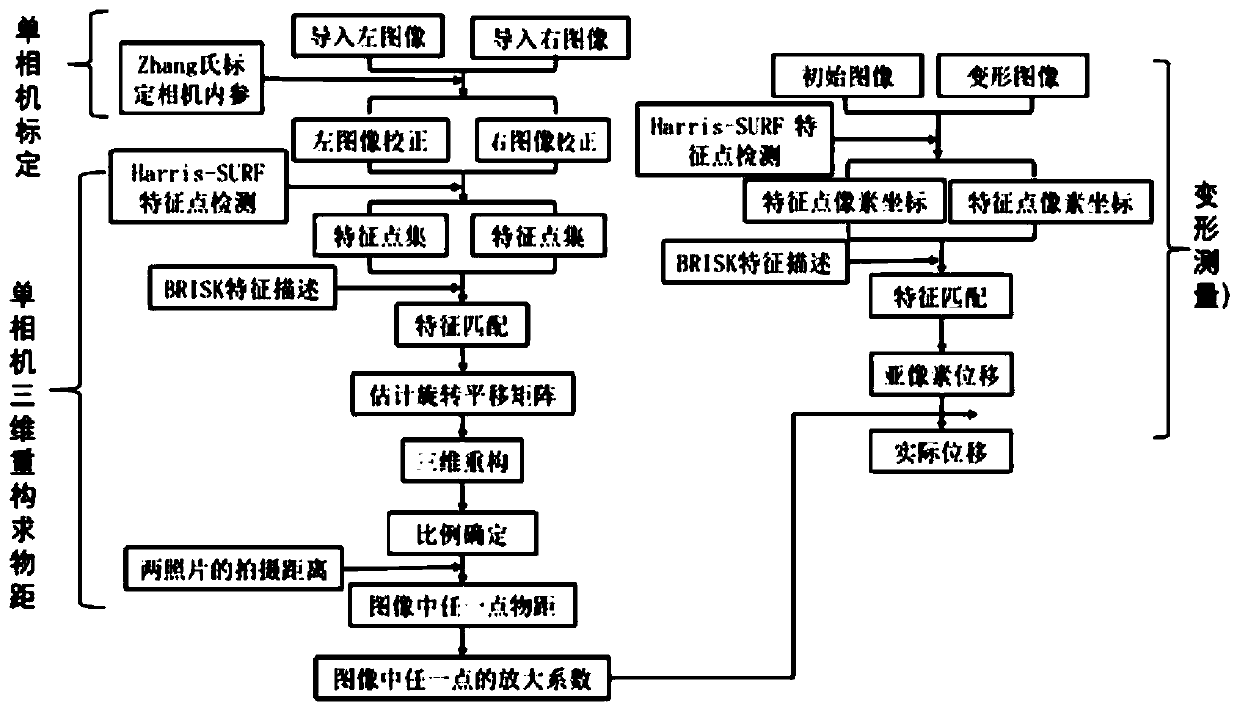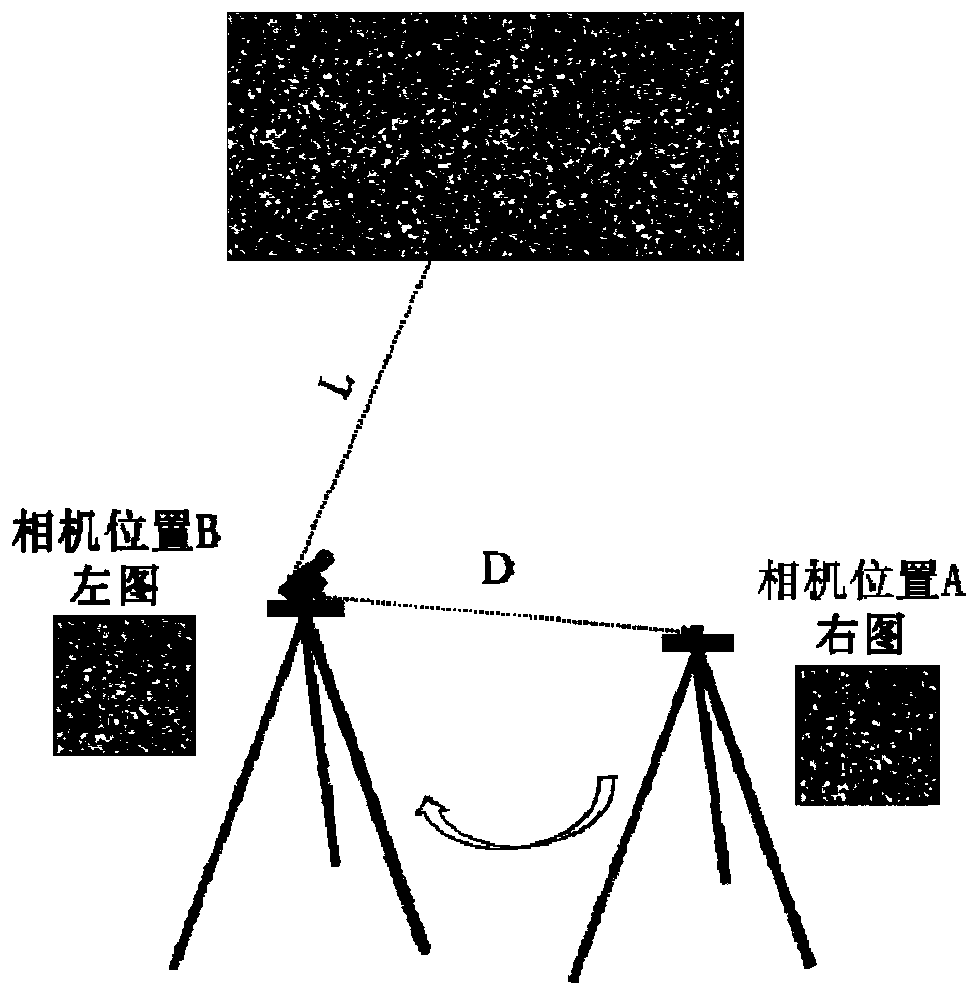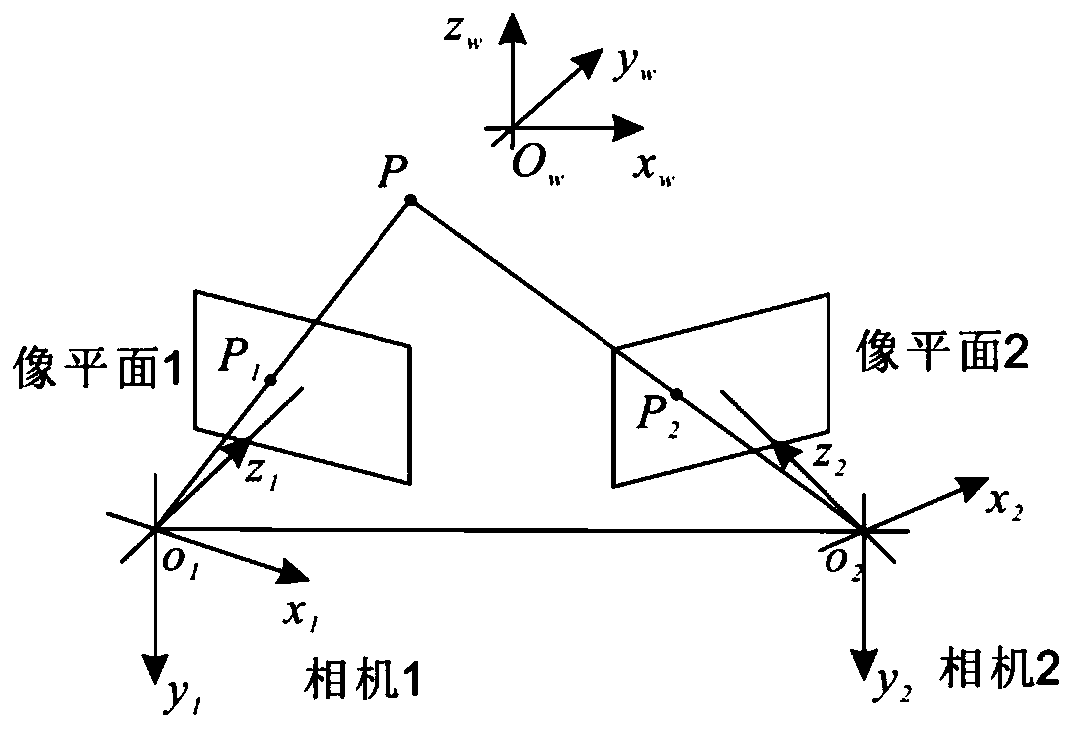Image-based bridge structure deflection measurement method
A deflection measurement and bridge structure technology, applied in image analysis, image data processing, instruments, etc., can solve problems such as time-consuming, ineffective, and insufficient engineering structure features.
- Summary
- Abstract
- Description
- Claims
- Application Information
AI Technical Summary
Problems solved by technology
Method used
Image
Examples
Embodiment Construction
[0050] figure 1 Indicates the operation process of the present invention: after preparing the camera lens required for outdoor measurement, the internal reference calibration must be carried out first, and the present invention adopts Zhang’s calibration method; at the scene, collect left and right images, set up the camera at position A, and focus until the target structure is imaged Clear, take a picture, called the right image. The camera is set up to a new position B, and then a picture of the target structure is taken, which becomes the left image. The requirement here is that position B is as close to the same distance as position A from the target structure as possible, without refocusing. It is also important to note that the structures in the two images overlap as much as possible, such as figure 2 shown. Then, the Harris-SURF detector is used to detect the feature points of the two pictures respectively, and the BRISK descriptor is used to describe the feature p...
PUM
 Login to View More
Login to View More Abstract
Description
Claims
Application Information
 Login to View More
Login to View More - R&D
- Intellectual Property
- Life Sciences
- Materials
- Tech Scout
- Unparalleled Data Quality
- Higher Quality Content
- 60% Fewer Hallucinations
Browse by: Latest US Patents, China's latest patents, Technical Efficacy Thesaurus, Application Domain, Technology Topic, Popular Technical Reports.
© 2025 PatSnap. All rights reserved.Legal|Privacy policy|Modern Slavery Act Transparency Statement|Sitemap|About US| Contact US: help@patsnap.com



